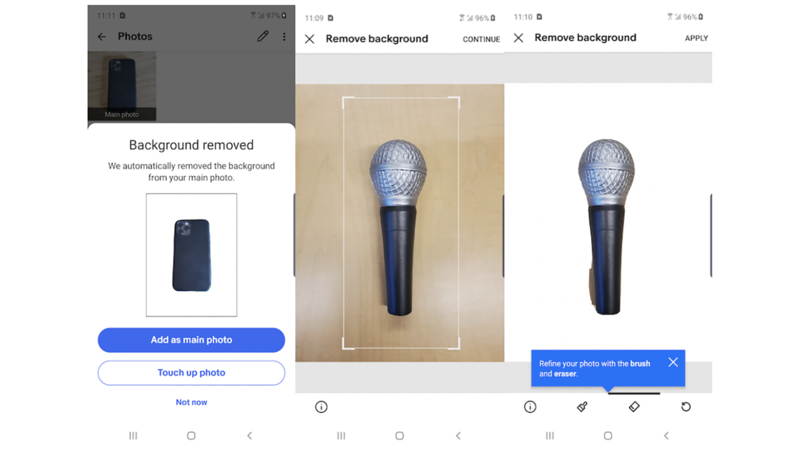Editor’s Note: Image Clean-Up launched on iOS and Android devices in February 2020. This article provides several updates for the feature on Android.
Introduction
Powered by computer vision, eBay’s Image Clean-Up feature solves two issues. First, the importance of quality, visual information is increasing every day. eBay needs to constantly improve the visual representation of listings on the platform. Second, we found that most users do not have access to professional photo equipment that can be used to take photos of items on a white background, nor do they have the ability to successfully use photo-editing software. White backgrounds are important for listings to be optimized for Google Shopping, and they improve the shopping experience for buyers by making search look and feel more streamlined.
Feature Overview
One of the most important decisions in the implementation of Image Clean-Up was to make the entire feature deploy locally on the device with the elimination of any service interaction. Image data is heavy, and we didn’t want to transfer such large amounts of data between client and server. It would also introduce a significant lag for each operation, which is not acceptable due to how critical interface performance is for the user (slower application is one of the top reasons for uninstalls).
By removing back-and-forth, client-server communication, our approach allowed for faster image processing. This was made possible by our close partnership with the Computer Vision team, who developed a powerful image processing algorithm and built a native library responsible for processing images on mobile platforms.
The feature consists of two paths – auto-cleanup and manual touch-up. This allows us to meet the needs of all user categories, providing the functionality in both automated (for quick and easy editing) and manual (for more fine-grained image tuning) modes.
Android Updates
From a technical perspective, the feature on Android is isolated in a separate module, which increases build speeds and testability. The module can also be made dynamic in the future, which would enable the feature to be downloadable on demand.
The addition of a native C++ library into the application and the need to support multiple processor architectures like ARM and x86 (both of which have 32- and 64-bit versions and require a separate build of native code) made us rethink how the app is packaged. The result was the implementation of app bundling – the distribution of the app via a bundle with Google Play, building a specific version of the app for each specific device. This allowed for a significant reduction of the app size for each specific user. The Selling team worked closely with the Foundations team to help with app bundling implementation.
Since launch, Image Clean-Up has been a huge success: 76% of sellers that used the feature published the listings with the images processed by Image Clean-Up1. Image Clean-Up is now live on Android for all users in 16 countries.
1 According to data collected between April 1 - 22, 2020

